Front kart set-up
6 TIPS FOR THE BEST…
FRONT KART SET-UP
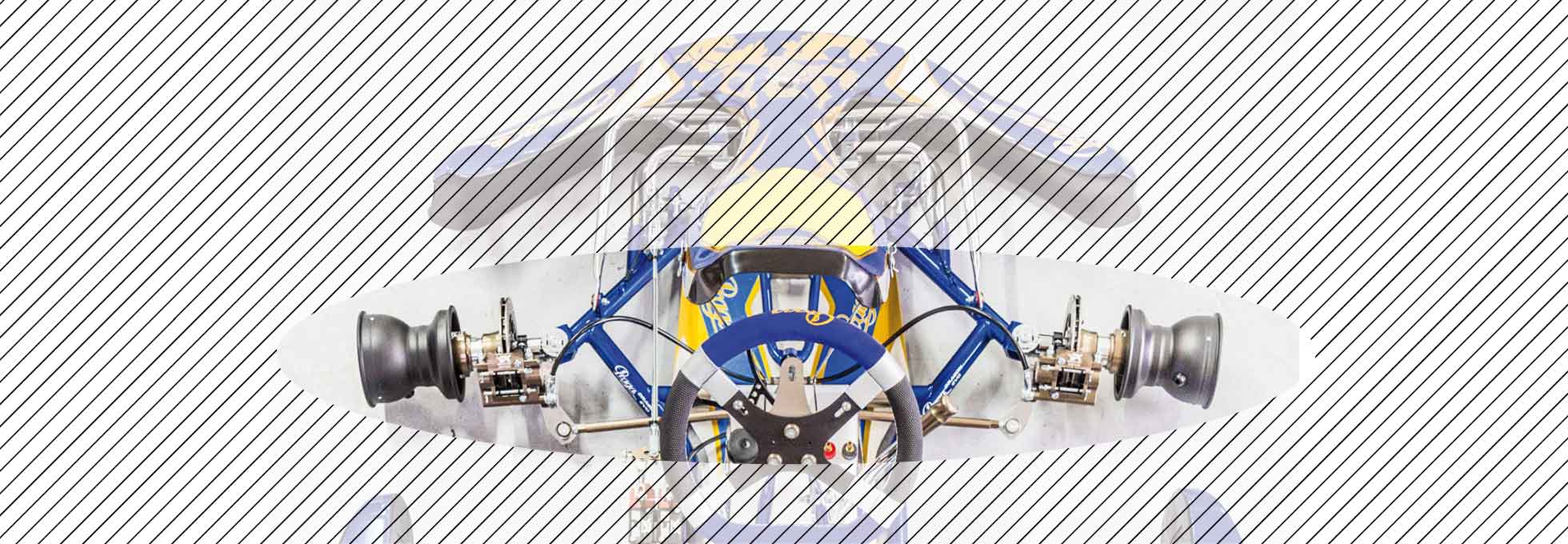
A kart is a simple vehicle: a chassis, four wheels, an engine … At least, that’s what most people who don’t practice this sport think. The reality, however, is quite different and it is no coincidence that there is an incredibly long list of adjustments to help find the best set-up for each track condition and type of tyre used.
Focussing the analysis on the front of the kart chassis, it is possible to identify several interesting solutions produced by the engineers at IPKarting to make their karts easier to set-up. They include the CCS system, placed on the Cs of the chassis, allowing the camber and caster to be modified independently, removable bars that allow stiffness to be modified and stub axles that allow the raising or lowering of ground clearance and modifications to the kart’s track.
CAMBER AND CASTER
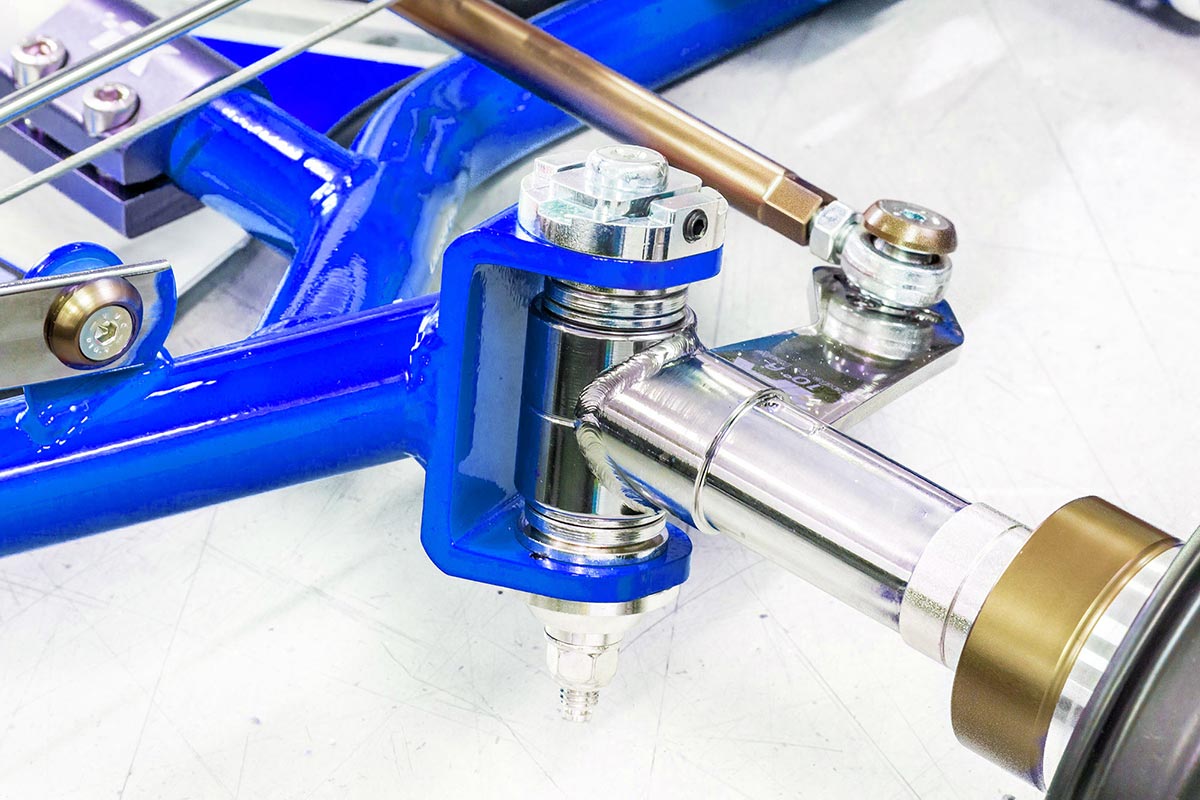
It is well known that the camber and caster are basic parameters of any set-up. IPK has created a system that allows these two important angles to be adjusted easily and with precision: the CCS (Camber Caster System). The CCS maintains the same height standards of IPK chassis (at the front), as well as, thanks to 4 mm and 2 mm spacers, allowing a greater number of height adjustments compared to the previous system which only had 4 mm spacers.
Camber
Adjustment varies from 2 degrees positive to 2 degrees negative per wheel, simply by moving the upper bushing and locking it in place using the relative nuts. Usually, there is a neutral bushing for the lower part, but the new system can also be used for the lower lock, permitting adjustments of up to 4 degrees positive and 4 degrees negative.
Caster
The CCS guarantees adjustments up to 2 degrees positive and 2 degrees negative. 4 degrees, if the device is also used on the lower part. To adjust the caster, replace the neutral upper bushing with a bushing of one or two degrees. The pictures and the table show the recommended settings for adjusting the Camber on a dry track and on a wet track and other available system settings.
TOE
The toe is the angle between the front wheels, taking as a reference the kart’s longitudinal axis. The parameter affects the performance of the kart on straights, bends and how the tyres wear.
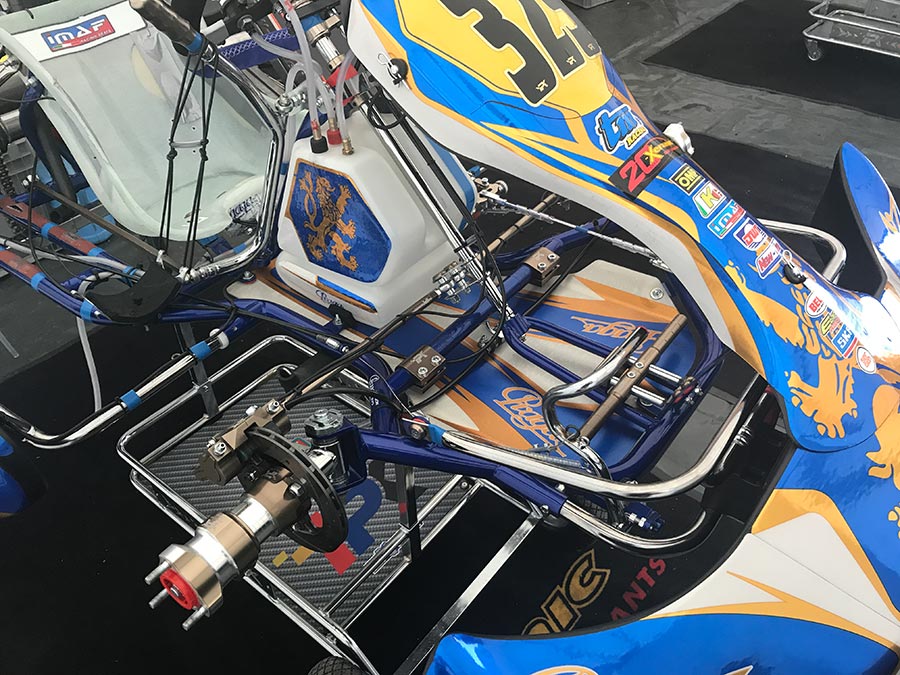
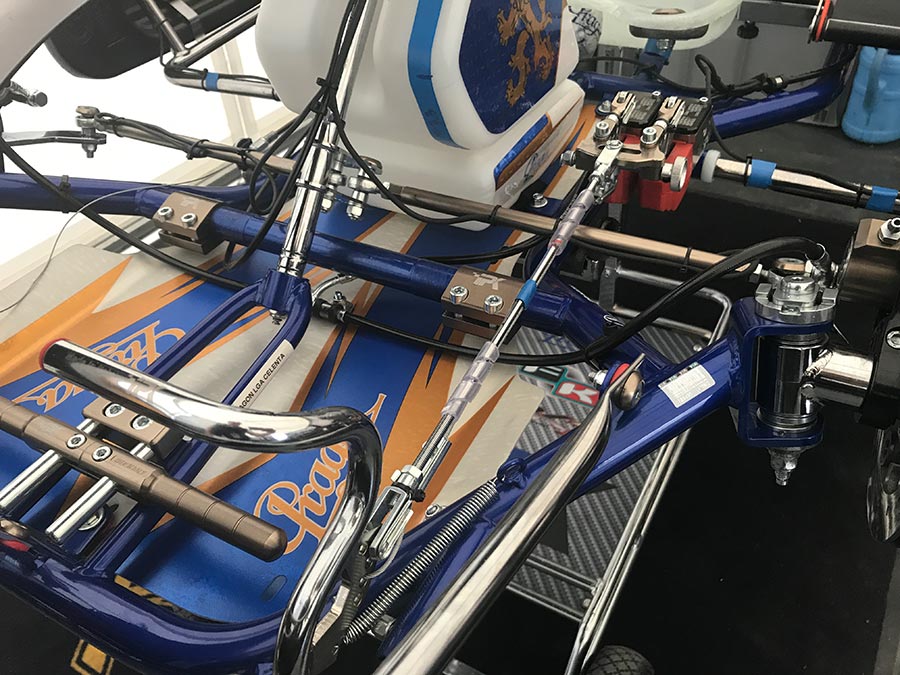
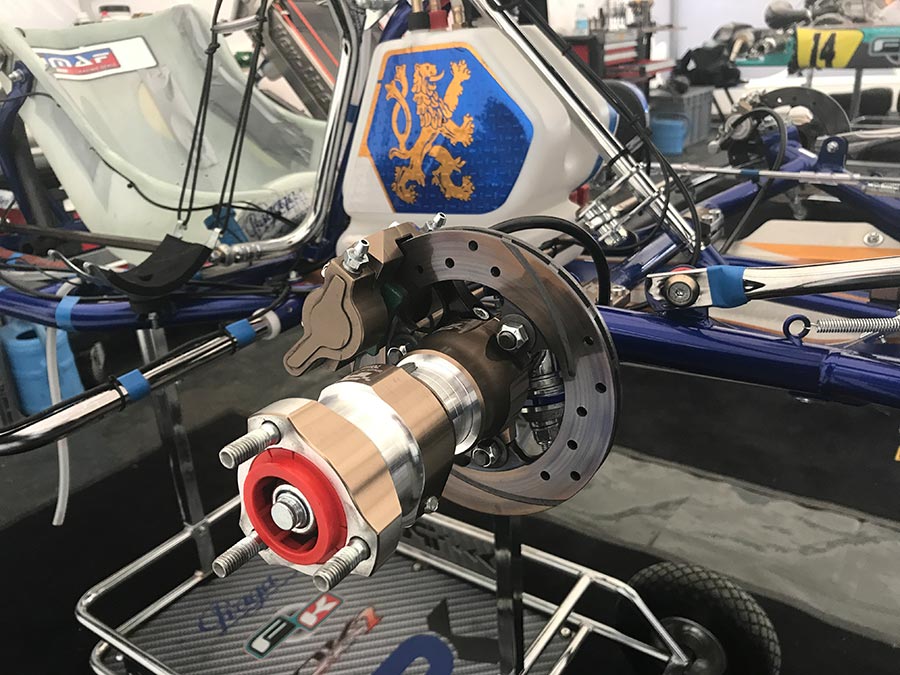
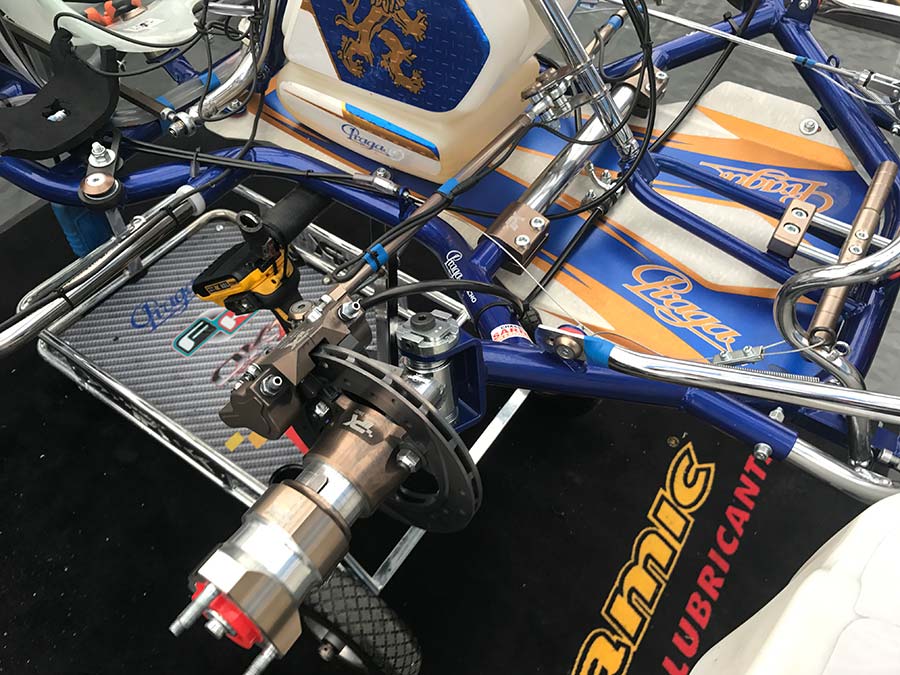
FRONT TRACK
The size of the front track is readily obtainable by measuring the distance between the outer edges of the kart’s wheels. To modify this parameter it is necessary to increase or decrease the number of spacers between the stub axle and the hub, while the size of the hubs are changed directly on karts equipped with front braking systems.
Modifying the size of the front track also has an effect on the rear of the chassis: widening the track normally causes an increase in side bite. Usually, there is a tendency to widen the front of understeering karts in order to achieve more grip.
REMOVABLE BARS
The front bars supplied as accessories, either made of steel or teflon, serve to increase or decrease the stiffness at the front of the chassis. Depending on the material and the type of bar, the chassis behaves differently, which is why IPK provides three bars to help achieve the ideal set-up of the kart:
– Teflon bar: this bar, supplied as standard for Praga Karts chassis, is the softest version. It flexes the most and springs back differently compared to steel bars, accompanying the movement of the chassis more faithfully.
– Laser-cut bar: made of steel, it has two stiffness settings. As seen in the picture, the bar has been cut differently along its length, alternating two side openings to a central one. When the bar is fixed with the two openings parallel to the floor panel the stiffness is medium-soft, whereas when it is rotated with the single opening parallel to the floor panel the stiffness is medium.
– Steel bar: this is the stiffest option provided by IPK. Fitted as standard on Formula K chassis, it makes the front of the chassis stiffer.
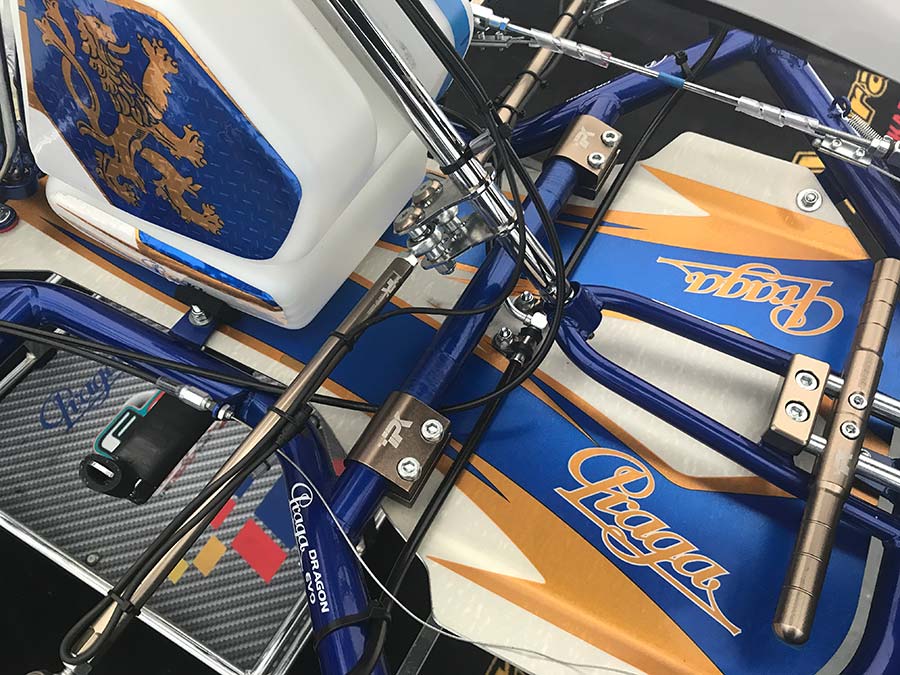
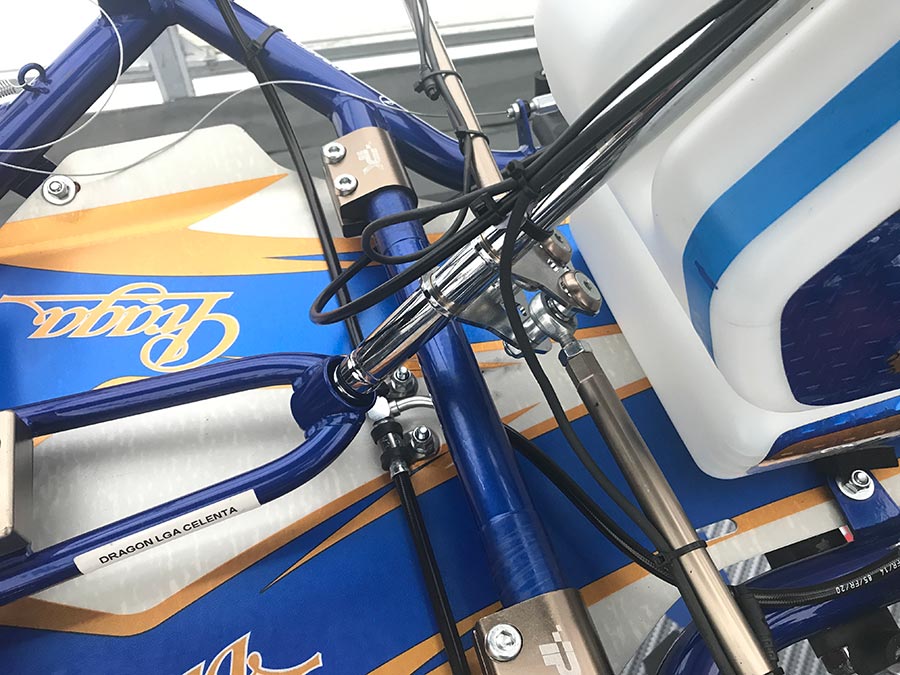
How to use bars
Every time a chassis is stiffened in a given place, it increases tyre grip in that area. In fact, the weight distribution and centrifugal force (on bends) on the four wheels is greater on wheels connected to a stiffer structure.
The front bar, depending on its hardness, results in a stiffening of the kart’s front end and, therefore, greater grip at the front wheels. However, a greater stiffness also means greater reactivity; therefore, the bar ensures quicker entry and changes in direction.
Contrary to what you might imagine, wet tracks tend to require a soft bar, or even no bar at all, in order to make the chassis softer and, therefore, less abrupt when changing direction. This helps control the chassis when there is very little grip and it tends to lose adherence easily with continuous understeer when entering bends and oversteer when exiting them. Stiffening the chassis with a “harder” bar, in this case, would not provide greater grip because adherence is altogether too little.
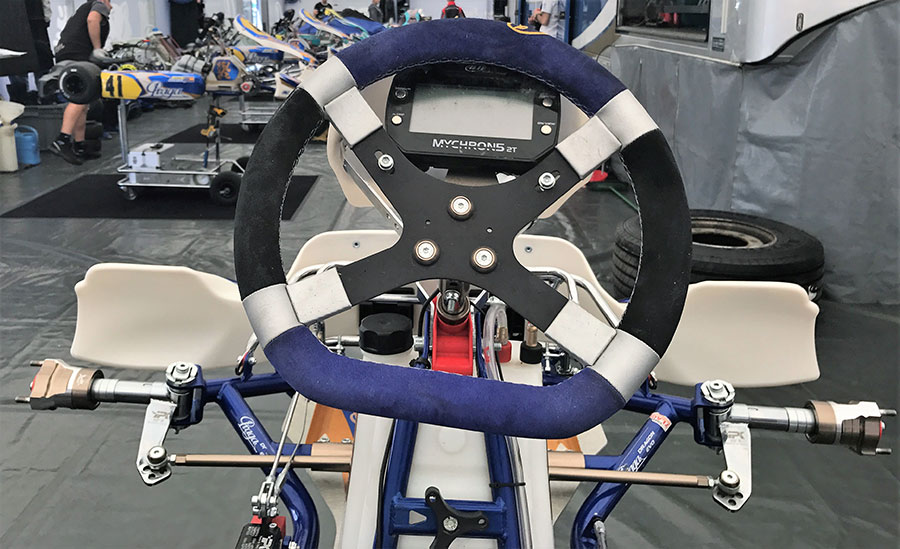
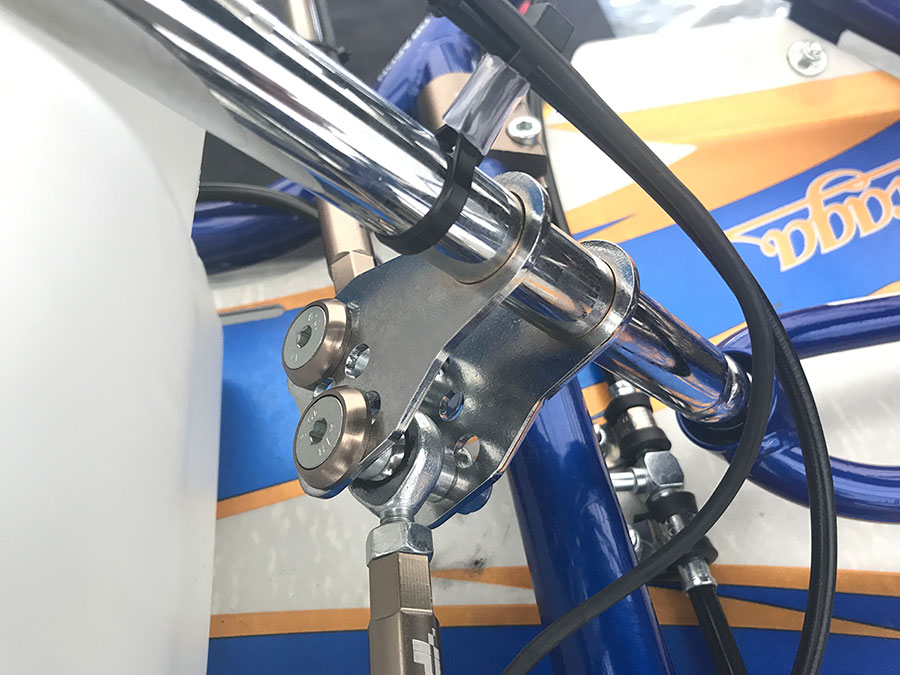
ACKERMAN ANGLE
The Ackerman angle defines the difference in steering between the inner wheel and the outer wheel on bends. The angle can be modified by adjusting the steering column and the stub axle attachment.
Increasing the Ackerman angle produces more responsive steering and a chassis that feels “freer” when exiting bends. Conversely, reducing the angle produces less directionality and less reactive steering.
HEIGHT
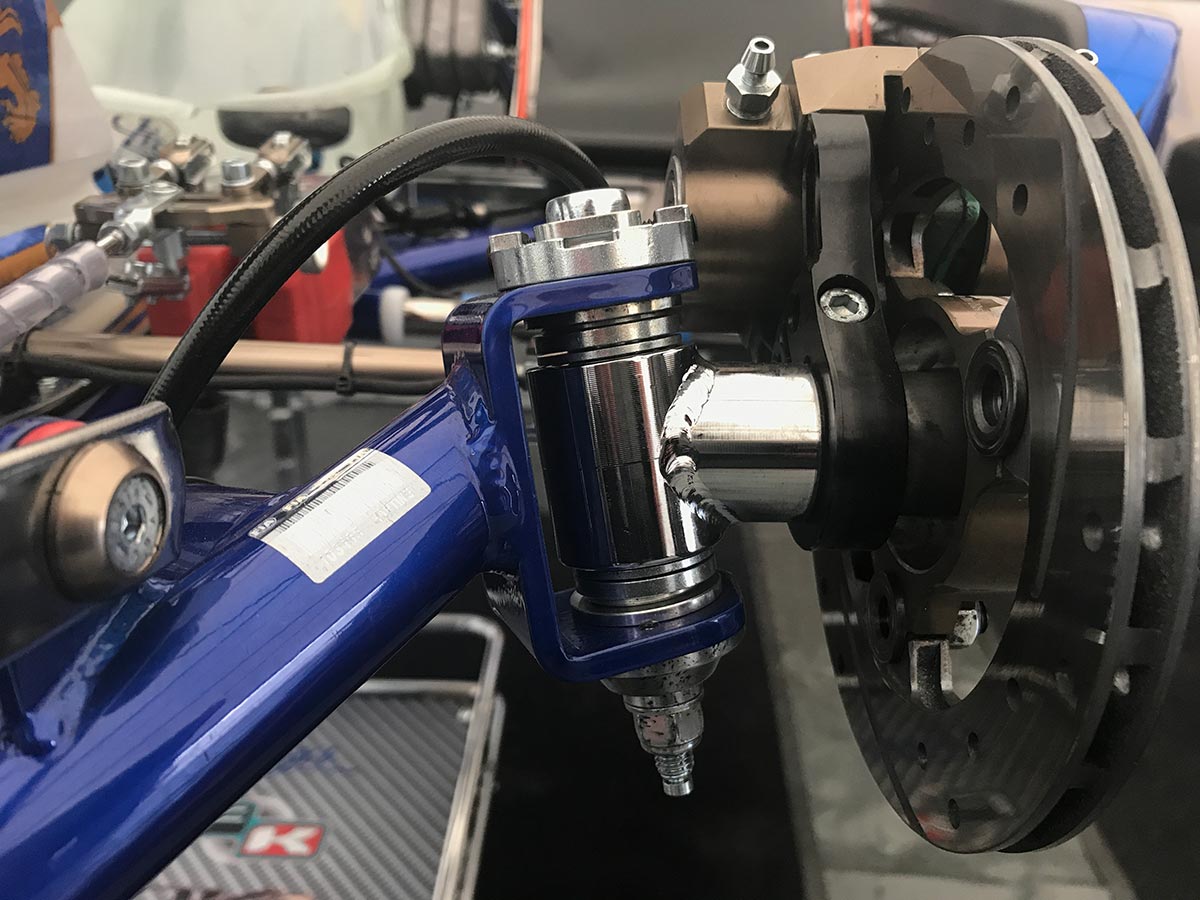
Raising or lowering the ground clearance of the kart body has an effect on a fundamental parameter: the height of the centre of gravity and the resulting rotational momentum. On the practical side, the two different settings can be summarised as follows:
– High chassis
The concept is: the higher the centre of gravity, the greater the momentum that tends to rotate the kart and the driver towards the outside. This momentum loads the supporting wheels and increases their grip, despite partly taking the load off the inner wheels.
– Low chassis
If the ground clearance of the chassis is lowered, together with the engine and driver, the centre of gravity is also consequently lowered. This reduces the “arm” between the centrifugal force and the force generated by friction, resulting in less rotational momentum. Vertical force on the tyre loading will decrease, along with their grip.


